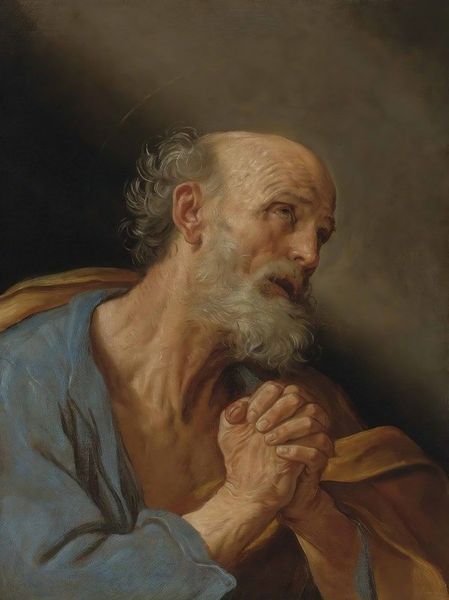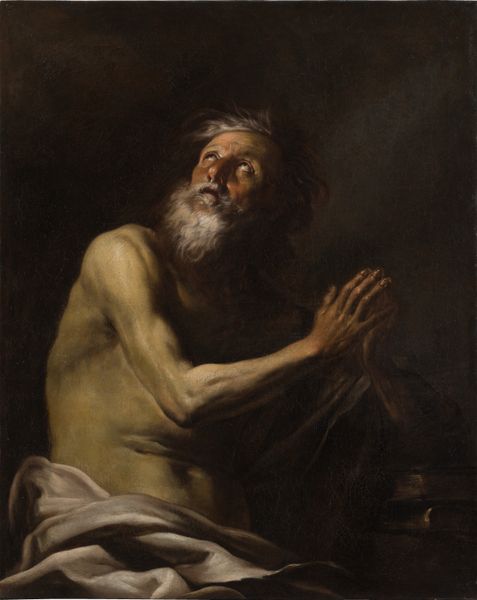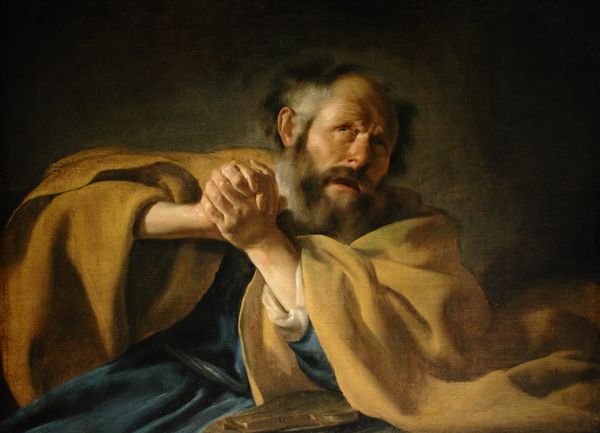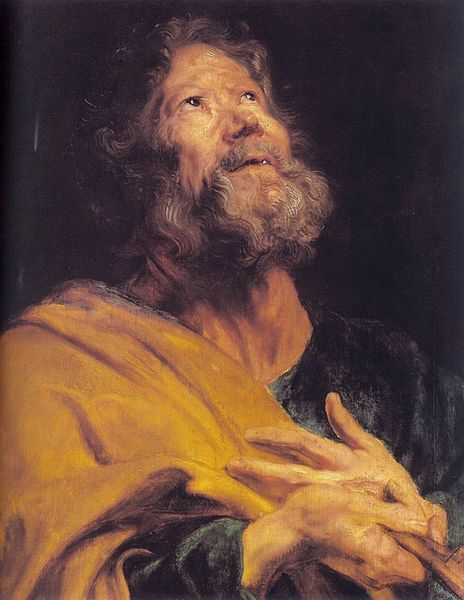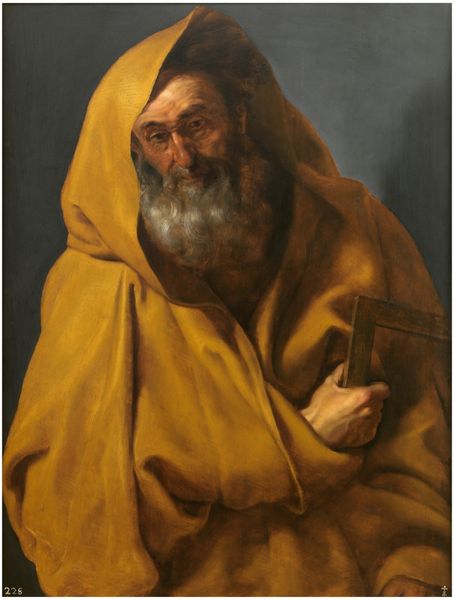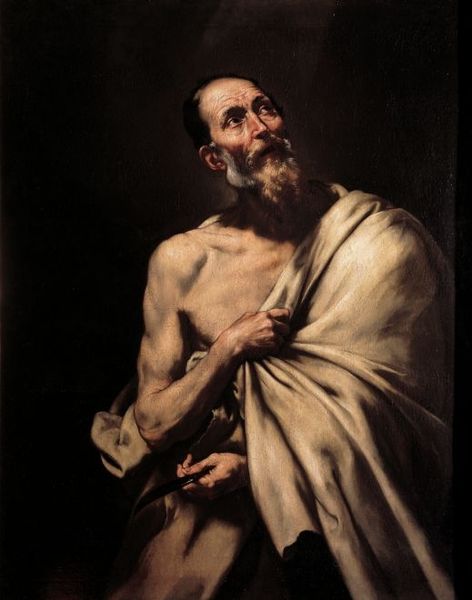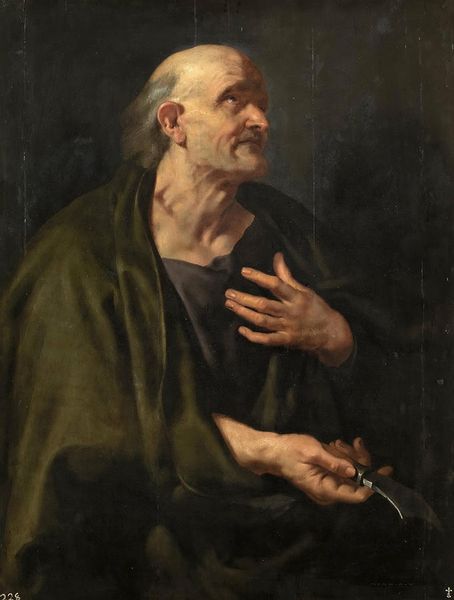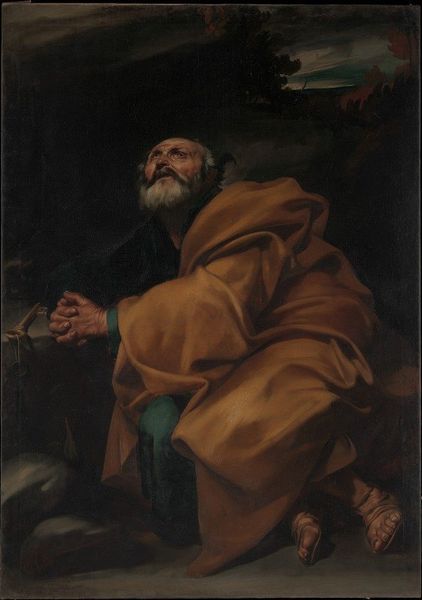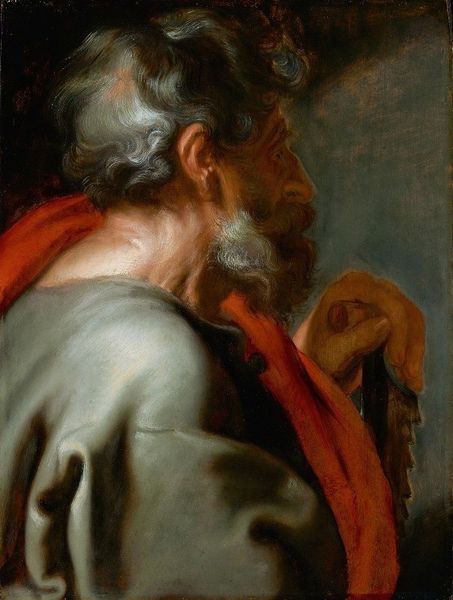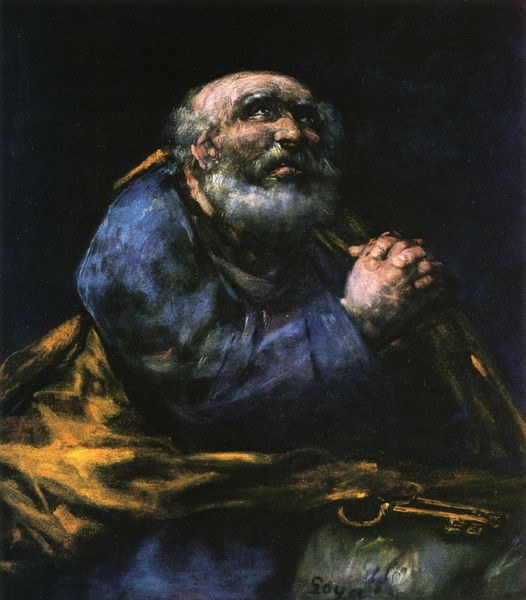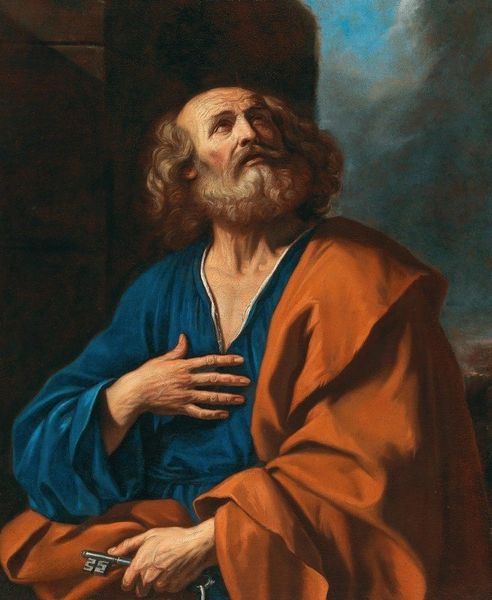
painting, oil-paint
#
portrait
#
baroque
#
portrait
#
painting
#
oil-paint
#
chiaroscuro
#
history-painting
Copyright: Public Domain: Artvee
Art Historian: Before us is Jusepe de Ribera’s oil painting, "Penitent Saint Peter," created sometime between 1628 and 1632. Curator: My immediate feeling is one of stark vulnerability. The intense contrast between light and shadow really emphasizes the weariness in his face and the supplication in his upward gaze. It feels incredibly human. Art Historian: Ribera, a leading figure in the Spanish Baroque movement, was known for his naturalistic and often brutally realistic depictions of religious figures. The Baroque emphasized drama, and he definitely delivers. This is typical of his output in Naples, where Spanish artists operated with considerable freedom. Curator: Absolutely. There’s such an intimacy, isn’t there? You can almost feel Peter's internal struggle, the weight of his denial. He is at the same time vulnerable and strong in this dramatic light and shadow. It really evokes the emotionality typical of Baroque painting. It challenges idealized notions of sainthood. Art Historian: It is true. Ribera’s Peter is no flawless icon; he's aged, weathered, and profoundly human in his repentance. And we should think about how this reflects a shift in the Catholic Church during the Counter-Reformation, prioritizing direct emotional connections with the faithful. Curator: I agree. By showing Peter's penitence, and portraying the saint with such honesty, Ribera makes him accessible. We understand fallibility; we are familiar with regret. This approach humanizes faith, opening up to many identities, and diverse situations, allowing us to question power and the structures that determine saintliness. Art Historian: I hadn't considered that intersectionality, but it does invite contemplation of historical religious art’s role. It does seem he’s moving away from iconographic presentation to embrace humanity and emotional appeal. Curator: Looking closely at the figure and its setting inspires an analysis of religion's power structure, questioning who has the privilege to forgive and be forgiven, opening discussions around accountability and transformation. Thank you for sharing your views. Art Historian: Indeed, a profound interpretation. Considering these themes adds substantial depth to Ribera’s piece, doesn’t it? It shows just how dynamically social contexts influenced his creative hand, and how relevant this kind of introspection still is.
Comments
No comments
Be the first to comment and join the conversation on the ultimate creative platform.
